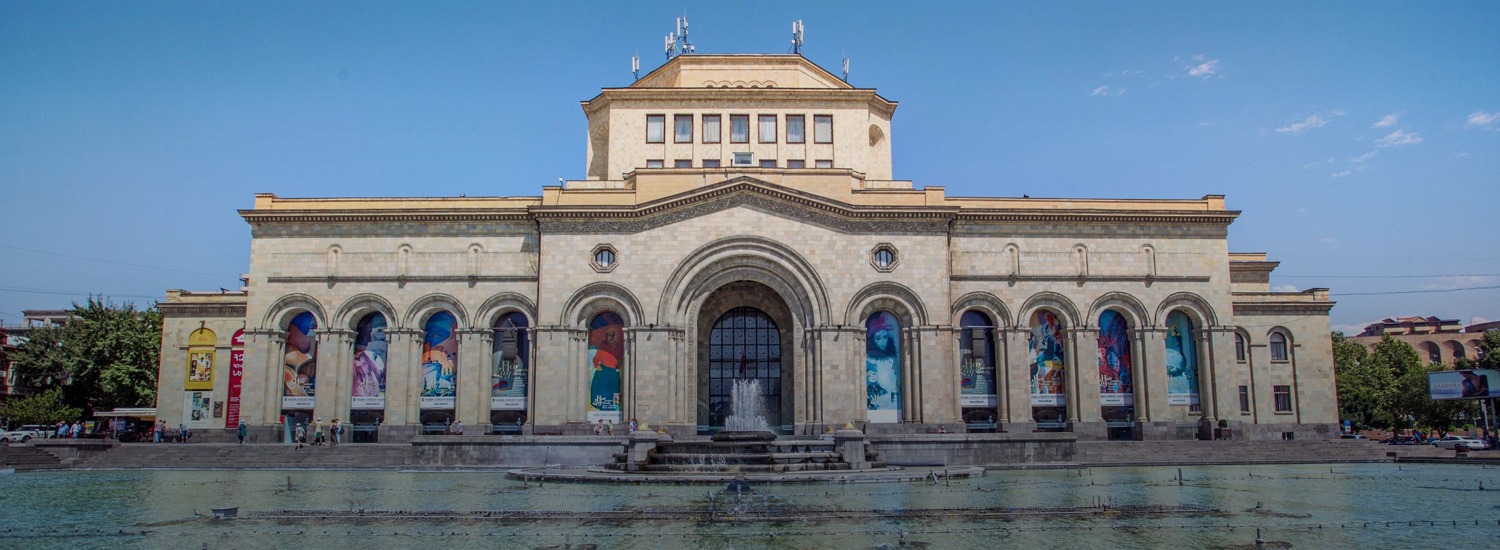Currently Empty: AMD0
History Museum of Armenia
Description
- The History Museum of Armenia was founded by the Parliament Law No. 439, September 9, 1919. It was called Ethnographic-Anthropological Museum-Library and had Yervand Lalayan as its first director.
- started receiving visitors on August 20, 1921
- was renamed State Central Museum of Armenia (1922), Cultural-Historical Museum (1931), Historical Museum (1935), State History Museum of Armenia (1962) and History Museum of Armenia (2003)
- was formed on the basis of the collections of the Armenian Ethnographical Association of the Caucasus, Nor Nakhidjevan Museum of Armenian Antiquities, Museum of Antiquities of Ani, Vagharshapat Repository of Ancient Manuscripts (15,289 objects)
- In 1935, based on the collections of this Museum, separate museums were established upon the order of the Central Committee of the Communist Party of Armenia: 1. The Museum of Art of the Armenian SSR (the present-day National Gallery of Armenia) was organized, based on the Museum’s Department of Art (headed by R.Drampian)- 1660 objects passed on to the newly-founded museum. 2. (the present-day Charents Museum of Literature and Art) was formed, based on the Museum’s – 301 objects and 1298 manuscripts to the newly-founded museum.
- The State Museum of Ethnography, founded in 1978 received 1428 objects and 584 photographs.
- is for 100% subsidized by the State, the owner of the collections and the building
- is entrusted with a national collection of c. 400,000 objects in the following departments: Archeology (35% of the main collection), Ethnography (8%), Numismatics (45%), Documents (12%)
- replenishes its collections by finds from excavations at archeologicalsites in Armenia, by purchases and donations
- represents an integral picture of the history and culture of Armenia from prehistoric times (one million years ago) till our days
- presents the rare traces of cultural interrelations with the countries of the AncientEast(Egypt, Mitany, the Hittite kingdom, Assyria, Iran, the Seleucid state, Rome and the Byzantine Empire) in the Armenian Highland:
- owns an enormous and exceptional collection of bronze specimens of the 3rd-2ndmillennia BC, which belong to the world treasury of masterpieces
- possesses the sumptuous historical-cultural heritage of Urartu, the powerful Armenian state in the Ancient East: exceptional cuneiform inscriptions, bronze statuettes, wall-paintings, painted ceramics, arms and weapons with sculptural ornamentation, unique specimens of gold, silver and bone, excavated from Karmir Blour, Arin-Berd and Argishtikhinili
- possesses the cuneiform inscription of 782 BC about the foundation of the city of Erebuni (Yerevan), by the Urartian king Argishti Iowns a collection of the most ancient evidence of the history of transport, 15th-14th century BC wooden carts and chariots, excavated from Lchashen, and their miniature models in bronze
- owns a rich collection of Armenian coins, consisting of the coins of Tsopk, Artaxiad dynasty, Kiurike kingdom and Armenian kingdom of Cilicia, also foreign issues of mints (Dvin, Ani, Yerevan, etc.), functioning in Armenia in different periods
- presents valuable specimens of apeculiar transformation of the Hellenistic culture in Armenia: sculptures, architectural details, jewellery and pottery, excavated from the archeological sites of Garni, Artashat and Oshakan
- presents the Christian culture of Armenia (4th-15th centuries)with the unique architectural, sculptural and ceramic finds, excavated from the cities of Dvin and Ani, from the fortress of Amberd
- carries out conservation and restoration work
- has published works on Armenian architecture, archeology, ethnography, history, series and reports on archeological excavations since 1948.



